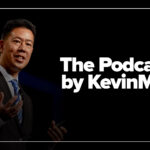The interview ends. The line goes dead. A senior CDC official has resigned, not because the science changed, but because the room did. Within forty-eight hours, CDC Director Monarez is fired by tweet, three senior leaders walk out, and a deputy from HHS (Jim O’Neill, a Silicon Valley investor turned political enforcer) is slotted in as acting CDC chief.
The headlines say turmoil. That is the polite word for capture.
Meanwhile, the CDC’s vaccine advisory committee (once the boring, apolitical spine of U.S. immunization policy) was fired en masse back in June and replaced with loyalists and vaccine skeptics. The norm is not bending; it is broken.
But sure, let us keep worrying about red food dye in our children’s cereal.
If you are a physician who still believes Kaplan-Meier curves, p-values, and personal probity will win this fight, listen carefully: The Vikings are not at the gates. The gates are gone.
The battle for the future of health care
How did we end up here, where a state surgeon general can eliminate all vaccine mandates and half the country cheers? Why do physicians keep losing the information war, even when nine former CDC directors write a joint New York Times op-ed?
Because the world changed. The nature of power changed.
There are no “fringe” movements anymore. Anyone with a ring light and a refurbished iPhone can build a campaign. Network effects, raw emotion, and tribalism and virality do the rest. We, on the other hand, keep bringing evidence to a narrative fight, integrity to a loyalty test, and press releases to a meme war.
Their tools: myth, repetition, network effects, and spectacle. Ours: PDFs.
The realpolitik gap
This is the realpolitik gap, the fault line separating the medical establishment from the MAHA (Make America Healthy Again) movement. It has been widening for years, but COVID was the earthquake that split it wide open. When trusted leaders bungled communication about masks, distancing, and mandates, they did not just lose the message. They lost half the country’s respect, and with it, the authority to lead.
Clinical excellence without power literacy is noble and strategically helpless.
The MAHA playbook
Here is how this movement wins:
- Remove the referees: Fire neutral panels like ACIP and other independent advisory boards.
- Install loyal interpreters: Replace expertise with loyalty.
- Throttle the truth: Datasets, grants, and guidance become partisan weapons.
- Find a foil: Harvard, seed oils, food dyes. Keep public anger focused outward.
- Build parallel authority: Create new panels and influencers who validate only their narrative.
- Flood the zone: Pour so much noise into the system that the public cannot tell who is drowning.
This is not just bad policy. It is structural displacement. It is information warfare, and it is working.
There is a reason MAHA lands like a cultural thunderclap while Michelle Obama’s Let’s Move campaign was dismissed as lightweight, even though both aimed to change how America eats and lives. Let’s Move was a PSA about broccoli. MAHA is weaponized grievance wrapped in spectacle, coordinated to overtake the infrastructure of health care delivery.
The coming fracture of public health
In the near term, expect chaos. Guidance on vaccines, outbreaks, and emergency response will swing wildly, shifting not with the data but with whoever holds power. The result: clinician confusion, public mistrust, and plummeting vaccination rates.
As federal agencies like the CDC lose capacity and credibility, their core functions will splinter outward: Universities and hospitals will build their own dashboards and guidance systems. Nonprofits will step in where federal leadership collapses. These efforts are noble but fragmented and under-resourced.
Meanwhile, a private parallel ecosystem will harden: concierge clinics for the affluent. Functional medicine networks and supplement companies selling certainty. Influencer-doctors whose charisma drowns out the CDC’s voice.
Soon, federal health guidance will be just one voice among many, and often the quietest. Future public health panels will be seen not as neutral scientific bodies but as partisan brands, competing for followers like influencers or startups.
The long game
For over a century, America relied on a tacit agreement: Independent science legitimizes public action. Even during political fights, scientific evidence could guide governing. When that breaks, when evidence itself is politically filtered, you can still do science, but you can no longer govern with it.
Public health stops being public. It becomes just another marketplace of competing truths. And accurate, evidence-based medicine becomes a luxury product, fragmented, unequal, and for sale to the highest bidder.
The doctor’s war manual
Do you want to wage an information war, or win it? Start here:
- Narrative before data: Begin with the human stakes, then bring the science.
- Capture the meme: Every message needs a handle, a visual, a move.
- Think infrastructure: Build repeatable toolkits that scale.
- Lead with humility: “Tell me what you see; I will show you what I have checked.”
- Outsider energy, institutional ethics: Use your exile from the establishment to rally reform.
- Make medicine a ritual: Community vaccine nights, barbershop Q&As, neighbor-doc circles.
- Prebunk, then inoculate: Teach people why lies are tempting while giving them the emotional payoff inside the truth.
Postscript: a wake-up call
The era of civility is over. Our opponents walked in with bulldozers while we clutched checklists. The establishment is not being reformed. It is being gutted. And unless we turn our scrubs into field uniforms, science becomes a sermon no one hears. My fellow providers, this is our wake-up call. Clean hands may be necessary in the OR, but in the public sphere, they are a liability. We need a network-powered fight, a movement of ideas as relentless and adaptive as the forces tearing our institutions apart.
Rusha Modi is a physician executive.



















![Rebuilding the backbone of health care [PODCAST]](https://kevinmd.com/wp-content/uploads/Design-3-190x100.jpg)
![Rediscovering the sacred power of the patient story [PODCAST]](https://kevinmd.com/wp-content/uploads/Design-2-190x100.jpg)
